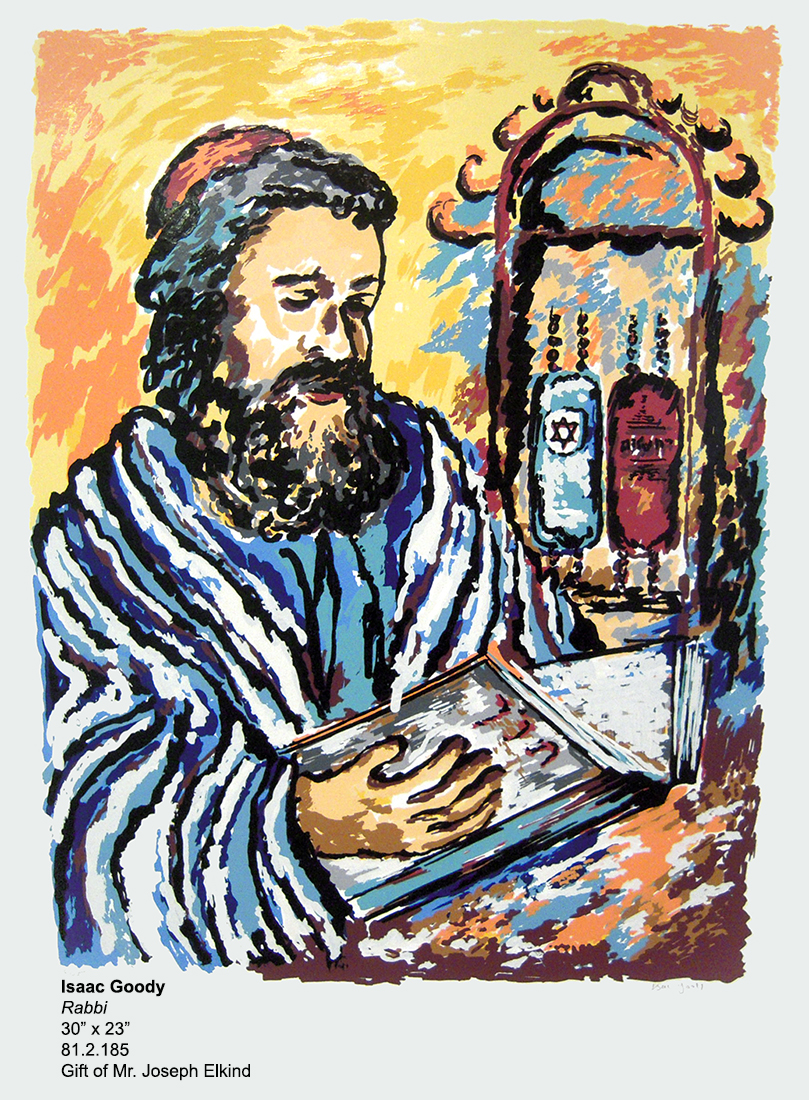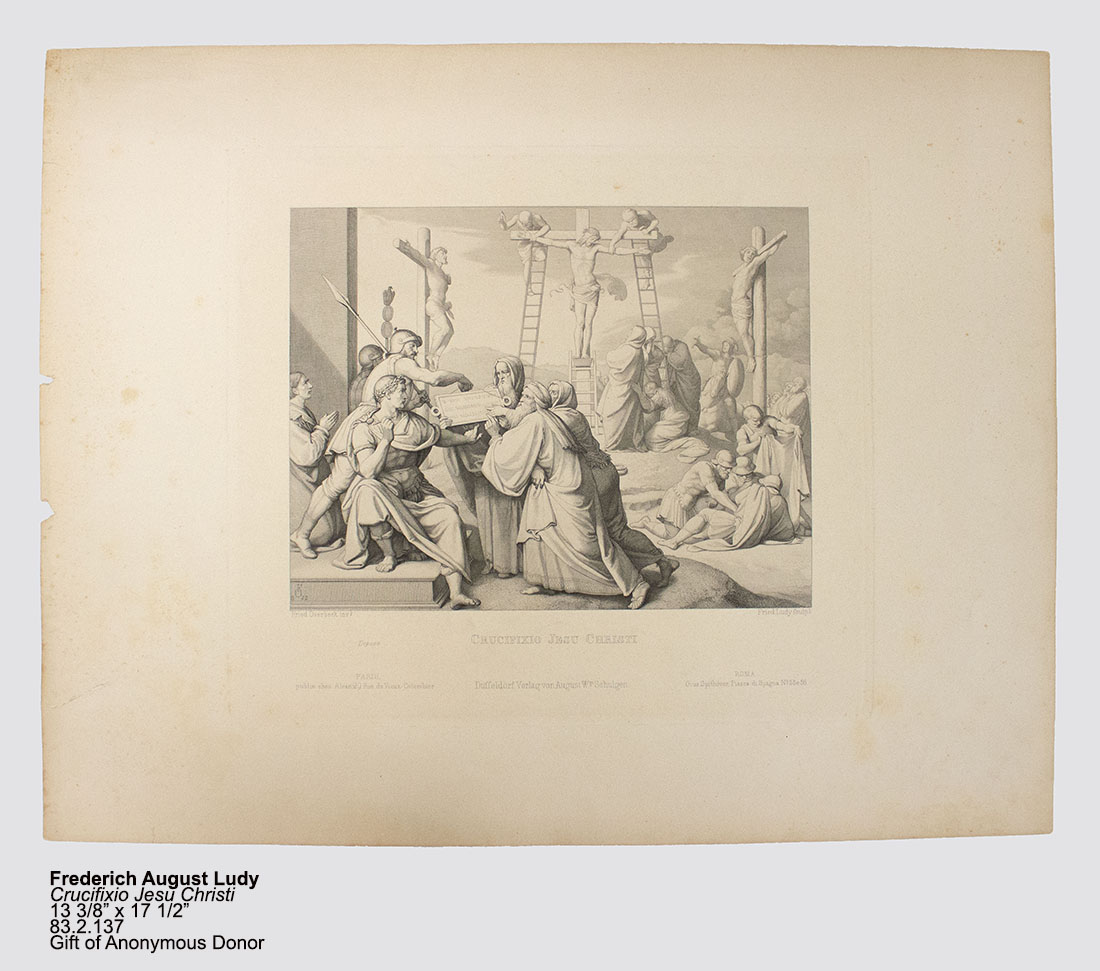Isaac Goody
Rabbi
serigraph
30” x 23”
1970s
81.2.185
Gift of Mr. Joseph Elkind
“Passover affirms the great truth that liberty is the inalienable right of every human being…. Pharaoh enslaved a whole race, and was chastised for his crime by the Divine Hand. But in thus intervening between the slave and his oppressor the Almighty fixed His canon against slavery for all time. He thereby declared that every human being has the right to the freedom which will enable him to develop to the utmost all the powers of body, of mind, of soul, with which God has endowed him; and that slavery, therefore, with its debasing effects upon the intellect and the character, is a sin against the laws of God himself.” – Morris Joseph, Jewish Theologian, excerpt from his book, Passover: Judaism as Creed and Life
Passover is a week-long festival commemorating the exodus of the Israelites from slavery in ancient Egypt. In Hebrew, it is called Pesach, meaning “to pass over,” as God passed over the homes of Israelites during the tenth plague on the first Passover. This multicolored serigraph print in a graphic style depicts a Rabbi wearing a yarmulke and a tallit, reading from a prayer book. In the background are two rolled Torah scrolls in a Aron Kodesh, or Holy Arc.

